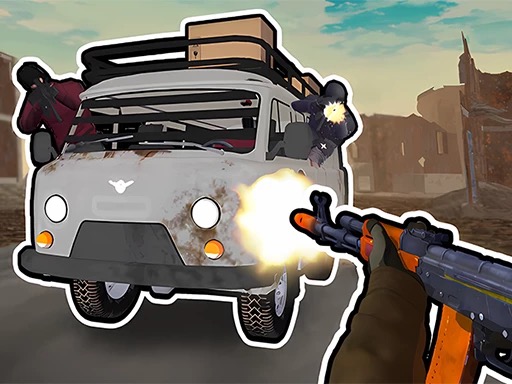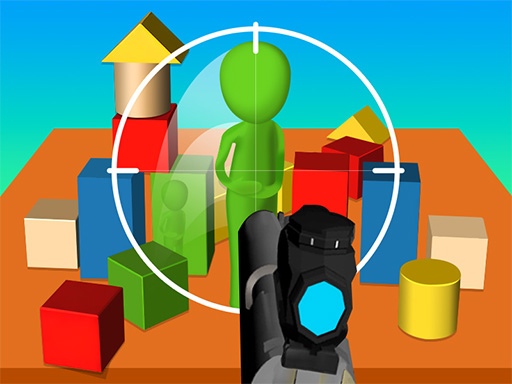
Breakaway: The Ultimate Guide to Surviving & Dominating the Chase
You start where the chase starts: your car’s sputtering, the engine wheezes, and the sirens are getting louder—but hey, you’ve got weapons. This guide walks you through everything for one thing only: stop the pursuers, survive the chaos, and have a blast doing it. We’ll cover mechanics, controls, weapon loadouts, step-by-step strategies for kids, parents, and general players, plus tips to squeeze the most fun and learning from each adrenaline shot of gameplay. Ready? Then let’s shift gears.
Understanding the Game: Core Mechanics, Controls, and Objectives
What’s the Goal — and Why It’s Never Just “Run”
The premise is deliciously simple: your car is weak, your arsenal is not. The primary objective is to break away from or destroy all pursuers. Sounds straightforward, until motorcycles, drones, jeeps, and helicopters turn the road into a living puzzle. You’re balancing offense and evasive driving, and every choice—shoot, boost, swerve—has consequences.
Controls: PC, Mobile, and Console Basics
On PC: aim with the mouse, shoot with the left mouse button, swap weapons with numbers 1–4, reload with R. On mobile: tap to shoot, drag to aim, and on-screen buttons swap weapons. Console ports (if available) map aim to the right stick, fire to the right trigger, and swaps to shoulder buttons. Small tip: practice recoil control in a calm level to get that muscle memory before the helicopters join the party.
Have you noticed how comfortable controls let your instincts shine? Getting comfortable with input translates directly into survival, which leads us naturally into loadouts and what to pack for different chases.
Weapons & Loadouts: Choosing Your Arsenal for Every Situation
Categories of Weapons and Their Roles
Think of your weapons as tools, not just “bigger boom.” The AK47 and machine guns are reliable anti-fodder—great versus motorcycles and ATVs. The minigun and stationary guns chew through armor but require time to track. Crossbows and precise weapons are for headshots—high risk, high reward. Flamethrowers punish close-range swarms and block narrow passages. Each weapon’s range, DPS (damage per second), and utility matter.
How to Build a Balanced Loadout
A typical balanced loadout could be: Primary rapid-fire (AK47), Secondary high-damage (Minigun), Tertiary utility (Flamethrower), Special (Crossbow or Rocket). On the other hand, if you face airborne enemies, swap the minigun for a weapon with vertical tracking or a guided rocket. Have you ever tried a “tank” build—shield, heavy gun, and slow speed? It’s gloriously stubborn.
Below is a short table summarizing weapon roles:
| Weapon | Best Use | When to Equip |
|---|---|---|
| AK47 / Machine Gun | Fast-firing, versatile | Early levels, against light vehicles |
| Minigun | Sustained high-DPS | Against armored cars, jeeps |
| Crossbow / Sniper | Precision strikes/headshots | Thin windows, high-value targets |
| Flamethrower | Crowd control/close quarters | Narrow streets, ambush zones |
| Rocket / Explosive | Area denial/air targets | Helicopters, clustered pursuers |
| Stationary Gun | Hold & defend | Create chokepoints or cover retreats |
Choosing the right weapons is a strategic conversation with the map—more on that next.
Map Sense & Movement: Driving, Positioning, and Environmental Use
Read the Terrain Like a Pro
Maps have personality: some are long coastal highways, others are tight urban sprawls. Long open roads favor speed and rockets; tight alleys make flamethrowers and crossbows king. Scan the environment—overpasses, fuel depots, construction barriers—all become either traps or tools.
Movement: Evasive Driving and Positioning Tricks
Swerve predictably sometimes, unpredictably other times. Use the environment to funnel pursuers into chokepoints (think: push them into a tunnel and lay down stationary turrets). Rollouts and drift-outs buy time to reload; boosting should be used sparingly—every boost reduces positional options later. What would you do when a drone shows up while you’re in a narrow alley? The right answer often is “reverse, create distance, then turn the fight into a headshot opportunity.”
Mastering map sense lets your weapons amplify your decisions instead of trying to paper over poor positioning—so let’s move into practical strategies for different players.
Step-by-Step Strategies: Kids, Parents, and General Players
For Children: Safe, Fun, and Skill-Building Steps
Start simple: teach kids to aim at lighter targets (motorcycles) first—quick wins build confidence. Encourage scanning before moving, and practice one weapon at a time. Friendly mini-dialogue helps: “Okay, if the bike’s on the left, what do we do?” They’ll shout “Shoot!” and learn sequencing. Reward curiosity: ask, “Have you ever noticed which path the jeeps take?” That observation skill is gold.
For Parents and Guardians: Guidance Without Taking Over
Parents, your role is coach, not chauffeur. Set short sessions (10–15 minutes) to avoid frustration. Use the game to teach planning: “Which three weapons should we pick?” Ask questions that prompt reasoning. Also discuss digital safety and age-appropriate behavior. If your child gets frustrated, model a cool-down tactic—take three deep breaths, analyze the map, then try a different loadout.
For General Players: A Practical Playbook
Start each level by mapping spawn points of pursuers and power-ups. Hit light enemies to build score and momentum; save heavy-hitters for chokepoints. Use short bursts of aggression followed by repositioning. Pro tip: when multiple enemy types converge, prioritize threats by damage output and mobility—airborne first, then light fast vehicles, then heavy armor.
These tailored strategies help you learn quickly and play smarter. Next up: combining weapons into combos and exploiting enemy weaknesses.
Combos & Advanced Tactics: Combos, Headshots, and Crowd Control
Combos That Feel Like Magic
Combos are where creativity shines. For instance: use a flamethrower to herd motorcycles into a narrow lane, switch to a stationary gun, then finish with rockets. Or, freeze an armored jeep with a specific stun weapon, then pump minigun rounds into the exposed engine. Mini-dialogue: “You do the herding, I’ll do the finishing.” That’s teamwork in one sentence.
Precision Play: Headshots and Target Priority
Headshots reward patience. A crossbow or sniper applied at choke points can take out a key driver, causing chain reactions among AI pursuers. Target priority matters—take out the driver, then the shooter, then the vehicles with explosive payloads. Have you ever felt the glow of satisfaction after a perfect headshot that collapses a whole squad? It’s addictive—and strategic.
Combine these advanced tactics with map knowledge and you’ll turn chaos into orchestration. Let’s consider how to adapt settings, accessibility, and learning moments next.
Accessibility, Practice Modes & Learning from Mistakes
Adjusting Settings & Practice Modes
A weak car is stressful, but accessibility settings can level the playing field: aim assist, slower enemy spawn, or larger UI buttons on mobile all make the game enjoyable for more players. Use practice modes to rehearse weapon combos without the pressure of being overwhelmed. Try a “no-consequence” run to explore how each weapon behaves.
Learning Loops: Reflect, Adapt, Repeat
After each failed chase, take a moment—what went wrong? Was it a missed reload? Bad positioning? The learning loop is: Observe → Hypothesize → Test → Adapt. Keep a simple log: which loadout worked, which choke points killed you, what enemies appear most. Over time, patterns emerge. Ask yourself, “What would I do differently if the helicopter appears at 0:23?” That reflection accelerates improvement.
Mistakes are the engine oil of growth here—keep them clean and you’ll run smoother. Next, we’ll look at safety, parental controls, and how to keep the fun healthy.
Safety, Parental Tips & Healthy Play Habits
Keeping Play Fun and Safe for Younger Players
This game has explosive action—so set ground rules. Use time limits, discuss in-game violence as mechanical and not real-world behavior, and emphasize teamwork and problem solving instead of aggression. Encourage kids to take breaks and reflect on strategy, not just score.
Parental Controls and Moderation Tools
Most platforms (PC, mobile stores, console ecosystems) provide parental control options. Limit playtime, disable in-app purchases, and review communication settings for multiplayer modes. Teach kids to mute toxic players and report issues. Also, celebrate small wins: “You lasted 3 minutes longer—what changed?” That keeps progress positive and growth-focused.
Healthy play makes the game more sustainable—so now, let’s talk about maximizing the fun, social sharing, and community engagement.
Maximizing Fun, Social Play & Sharing Your Wins
Turning Chases into Stories
Every level ends with a story: the time you baited a jeep into a gas tank, or when a drone inexplicably launched itself into oncoming traffic. Share those moments—caption them, laugh, and invite friends to top them. Mini-dialogue idea for posts: “Me: carefully plots route. Friend: ‘You sure?’ Me: ‘Watch and learn.’”
For Your Social: Hashtags, Platforms, and Community Tips
Share replays on YouTube, short clips on TikTok, or screenshots on Instagram. Use these hashtags to grow community engagement:
- #BreakawayChase
- #WeaponRush
- #DriveAndDestroy
- #ChaseStories
- #GamerCombo
Cross-post: Twitch for live play, YouTube for highlight reels, and Twitter/X for quick strategy threads. Embed short questions to boost interaction: “What would you have done at 1:12 in this clip?” Also link to broader context—here’s a trusted reference about vehicular combat games for background reading: Vehicular combat game — Wikipedia. Sharing builds connection, feedback, and a library of tricks.
Now let’s wrap up with a quick checklist and final pep talk.
Quick Reference: Key Strategies & Final Pep Talk
Bullet-Point Checklist of Essential Tips
- Prioritize targets: air > light fast vehicles > heavy armor.
- Balance your loadout: one rapid-fire, one heavy, one utility, one special.
- Use environment: funnel enemies into chokepoints.
- Practice reload timing; short pauses cost lives.
- Adapt: swap weapons based on map and enemy mix.
- Teach kids reflection: “Why did we lose that round?”
- Share clips; learn from community feedback.
Final Story & Motivation
Let me close with a quick story: I once thought a flamethrower was a novelty—until I used it to herd three motorcycles into a narrow underpass while my teammate rained rockets down from above. We survived by seconds and laughed for days. That’s the heart of this game—planning, improvisation, and shared joy. So tune your aim, choose your arsenal, and treat every chase like an improv performance where the audience is explosive and the applause is victory.
Play safe, have fun, and remember: the best strategies combine heart, curiosity, and a pinch of daring. What will your next chase story be?






